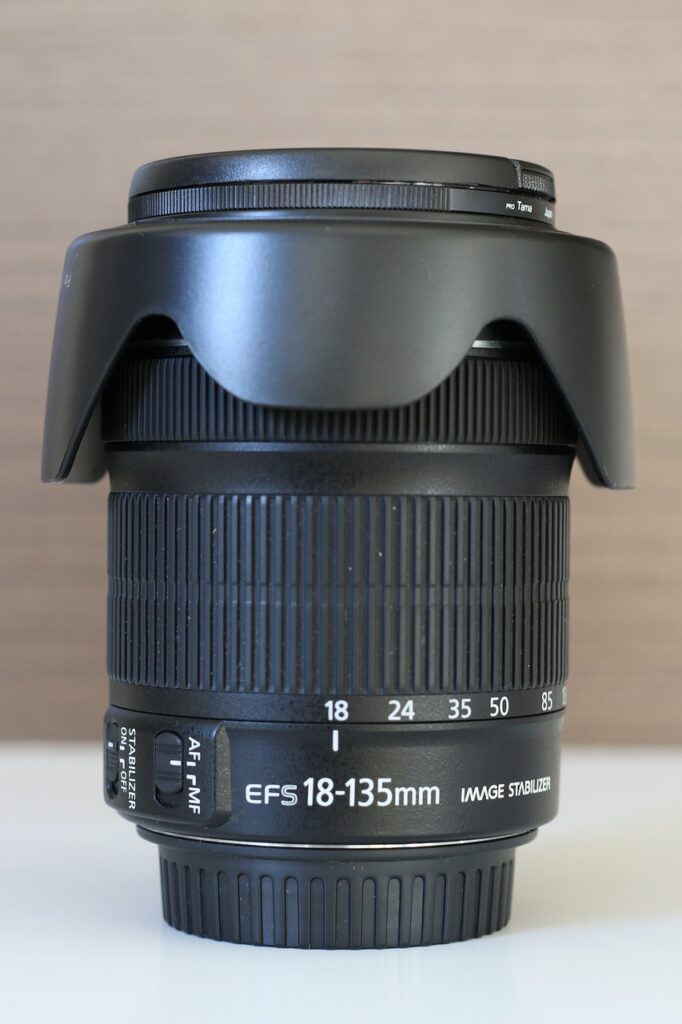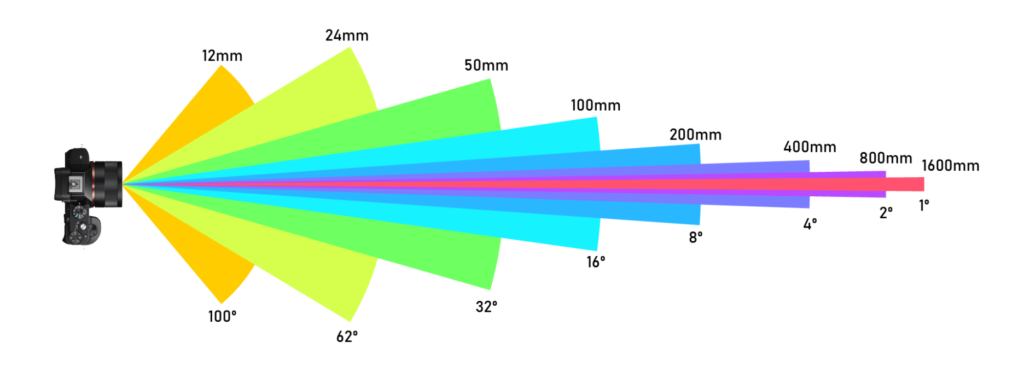What Is Focal Length?

Have you ever wondered why some photographs appear closer or farther away than others? The answer lies in the concept of focal lengths. Focal length is a fundamental aspect of photography that determines the field of view and perspective of an image. In this post, we will cover how focal lengths work and how they can enhance your photography skills, enabling you to create stunning visuals.
To put it simply, focal length refers to the distance between the lens and the image sensor when the subject is in focus. It is measured in millimeters (mm) and is part of the description of a lens. For example, it will be written somewhere on the lens, such as 18–135mm. The focal length affects the angle of view, magnification, and depth of field of the image being captured.
Shorter focal lengths provide a wide field of view that captures more of the scene, while longer focal lengths bring distant subjects closer, narrowing the field of view. For instance, a 24mm lens captures a broad scene, ideal for landscapes or indoor spaces. Conversely, a 200mm lens zooms in on distant subjects, such as wildlife or sports events, isolating them from the background.
Why Focal Length Matters
Focal length directly influences two critical aspects of photography:
- Field of View:
- Short focal lengths, such as 18mm, provide a wide angle of view, capturing more of the scene in the frame. These are great for landscapes or group shots. Longer focal lengths, like 200mm, narrow the angle of view, resulting in a more zoomed-in image, which is perfect for isolating subjects or capturing distant details.
- Perspective and Depth:
- Focal length alters how distances and proportions are perceived. Wide-angle lenses exaggerate the space between foreground and background elements, creating a sense of depth. Telephoto lenses compress the scene, making objects appear closer together and creating a dramatic, flattering effect in portrait photography.

Types of Focal Lengths
Different focal lengths serve different purposes. Here’s a breakdown of the most common categories:
- Wide-Angle Lenses (10–35mm):
- Wide-angle lenses capture a broader field of view, making them perfect for shooting landscapes, cityscapes, or large group photos. Their wide angle captures more of the scene and emphasizes depth, allowing both the foreground and background to remain in focus. However, they can introduce distortion, especially at the edges of the frame, which can make objects look stretched or curved.
- Standard Lenses (35–70mm):
- Standard lenses provide a field of view closest to human vision (approximately 46°). This makes them versatile for general-purpose photography, including portraits, street photography, and events. They offer minimal distortion and natural perspective, striking a balance between wide-angle and telephoto.
- Telephoto Lenses (70mm and above):
- Telephoto lenses narrow the field of view but magnify distant subjects. They’re ideal for wildlife, sports, and portrait photography. These lenses create a compressed perspective, bringing background elements closer to the subject. Additionally, their shallow depth of field allows for beautiful background blur (bokeh), making the subject stand out.
Zoom vs. Prime Lenses
Understanding the distinction between zoom and prime lenses is essential:
- Prime Lenses:
- Prime lenses have a fixed focal length, such as 35mm, 50mm, or 85mm. Known for superior image quality, they often feature wider maximum apertures (e.g., f/1.8, f/1.4), making them excellent for low-light situations and achieving a beautiful bokeh effect. Using a prime lens encourages you to think creatively about composition, as you cannot rely on zooming.
- Zoom Lenses:
- Zoom lenses offer a range of focal lengths, such as 18–55mm or 70–200mm. They are highly versatile, allowing you to adjust your framing quickly without switching lenses. While zoom lenses provide flexibility, they may not match the sharpness or low-light performance of prime lenses in the same price range.
Effects of Focal Length on Images
Focal length doesn’t just determine how much of a scene you capture—it also shapes the image’s overall aesthetic:
- Angle of View:
- A shorter focal length provides a wider angle of view, ideal for expansive scenes, while a longer focal length narrows the angle, creating a zoomed-in effect.
- Magnification:
- Wide-angle lenses are great for including more elements in the frame and creating a sense of depth. Telephoto lenses isolate subjects and bring distant objects closer, perfect for wildlife or sports photography.
- Perspective:
- Wide-angle lenses exaggerate the size of objects closer to the camera, creating a dynamic, immersive effect. Telephoto lenses compress distances, making objects appear closer together, resulting in a dramatic, cinematic look.
- Depth of Field:
- Wide-angle lenses have a greater depth of field, keeping more of the scene in focus. This is ideal for landscapes. Telephoto lenses, with their shallow depth of field, allow you to isolate a subject by blurring the background, often used in portraits.
Practical Tips for Beginners
Here are some actionable steps to get started with understanding focal lengths:
- Start with a Kit Lens:
- Most entry-level cameras come with an 18–55mm lens, covering a range from wide-angle to standard focal lengths. Use this versatile lens to experiment with different perspectives and compositions.
- Experiment:
- Try shooting the same scene at different focal lengths to observe how it changes the framing, perspective, and background. This hands-on approach helps you develop an intuitive understanding of focal length effects.
- Try a Prime Lens:
- Invest in a 50mm f/1.8 lens. It’s an affordable, sharp, and lightweight option that helps you learn the benefits of fixed focal lengths while achieving beautiful bokeh.
Common Beginner Mistakes
Avoid these pitfalls when exploring focal lengths:
- Confusing Field of View with Zoom:
- Focal length determines the angle of view and how the scene is captured. It’s not the same as a “zoom” function, which magnifies the subject.
- Ignoring Sensor Size:
- Always consider your camera’s sensor size when choosing a lens, as it affects the effective focal length and field of view.
Simple Exercises to Practice
- Focal Length Comparison:
- Photograph the same subject or scene at various focal lengths (e.g., 18mm, 35mm, 50mm, 85mm). Compare the results to understand how each focal length affects the image.
- Prime Lens Challenge:
- Spend an entire day shooting with a single prime lens, such as a 50mm. Moving around to change your composition instead of zooming will help you develop your creative skills.
Final Takeaway
Focal length is one of the most powerful tools in a photographer’s arsenal. By understanding its impact on your images, you can better control the story you’re telling and achieve your creative vision. Start experimenting with different lenses and focal lengths to discover what works best for you—your photography will only improve from there.
To help you get your head around all this I have found a DOF simulator which you can practise on. For focal length it’s the first slider in the lens section which is in mm.
